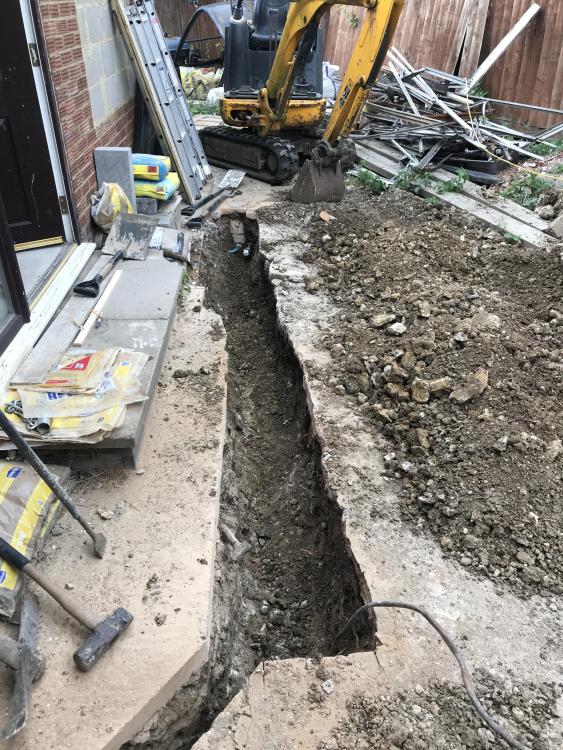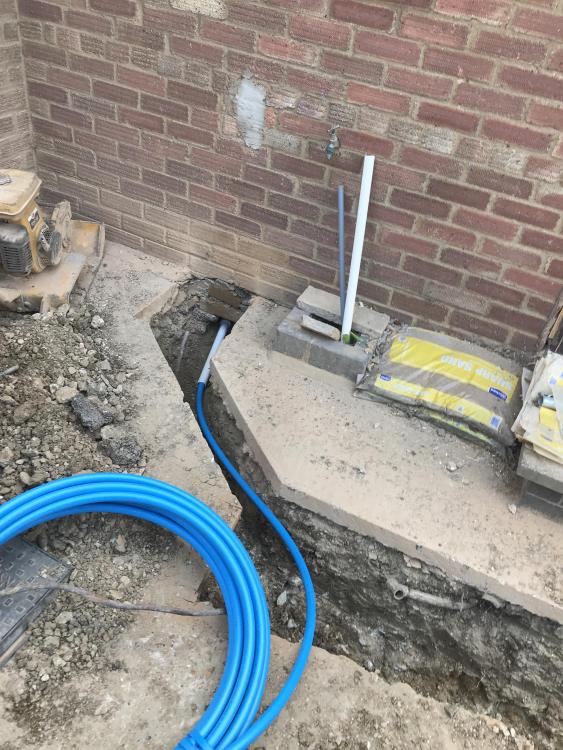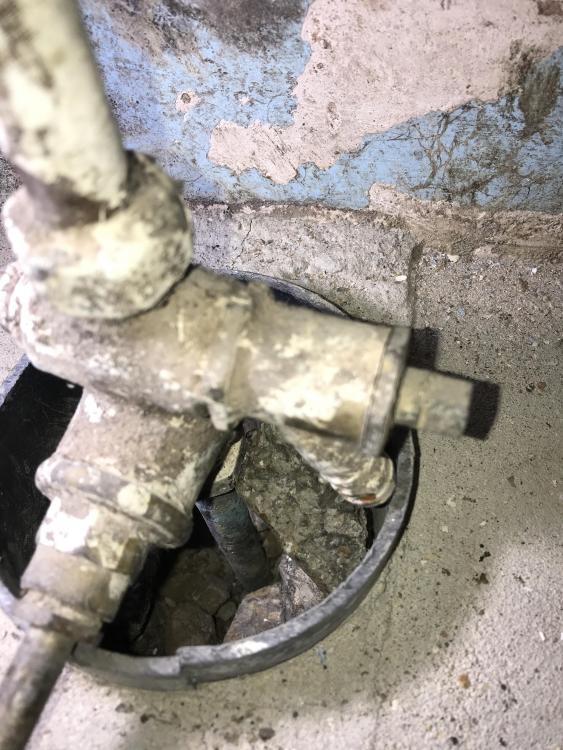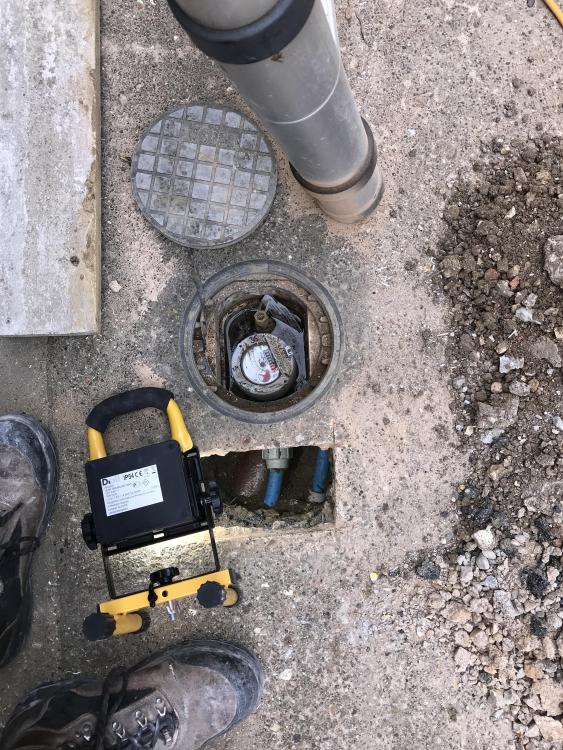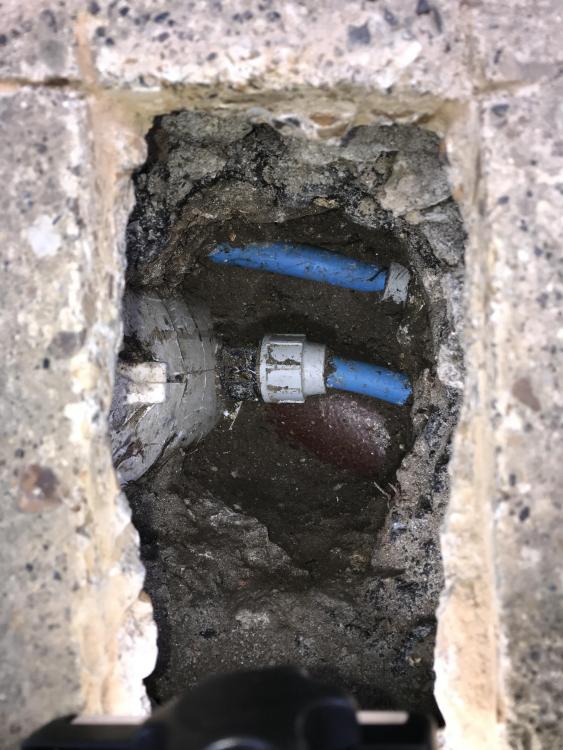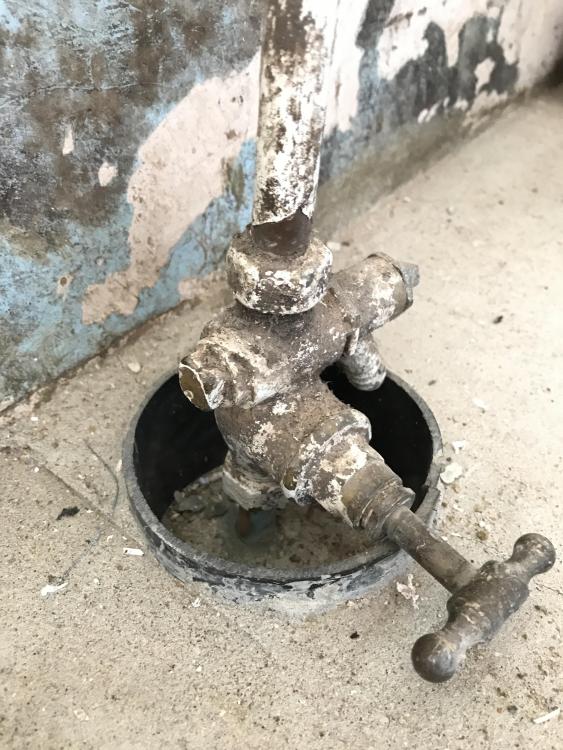
Jody
Members-
Posts
8 -
Joined
-
Last visited
Personal Information
-
About Me
Professional DIYer!
Jody's Achievements

New Member (2/5)
1
Reputation
-
Earth bonding Copper incoming mains with all plastic internal plumbing
Jody replied to Jody's topic in General Plumbing
Dug trench now between water meter and house, practically the whole run was in copper, just about a foot of mdpe where it connects to the meter. It wasn’t in any ducting etc. I’m running new blue 25mm mdpe all the way into the kitchen now, with a plastic stop cock. So won’t be any earthing required, plus I should get better flow now. The meter is in a proper meter chamber, it’s just concrete around the top of the chamber cover, so that’s all ok. Its not that deep the meter, but it’s a bit awkward in this location as there is solid bedrock about 450mm below ground. Im running the replacement mdpe slightly below where the old copper pipe was and above the bedrock. Maybe not as deep as you would do it in a new house, but it’s at least as deep as the old one was and I don’t think there had been any problems with freezing in the past. Oh btw, the input/output pipes from the meter/chamber, were not as I thought. The pipe coming out the meter side of the chamber was the input, the pipe coming out the valve side of the chamber was the output to the house. thanks for all your input everyone Jody -
Earth bonding Copper incoming mains with all plastic internal plumbing
Jody replied to Jody's topic in General Plumbing
Latest update. the copper runs from the kitchen stopcock at least a foot or so outside the house. question now is where under the patio does it convert to mdpe....! -
Earth bonding Copper incoming mains with all plastic internal plumbing
Jody replied to Jody's topic in General Plumbing
Today’s update now I’m back from holiday! I have excavated around the incoming mains in the house, gone down about 6 inches and it’s still just 15mm copper in the concrete.... Decided to dig up next to the water meter... check out the photos of what I found in there!!!!! 2 blue pipes and one large reddish clay type pipe - no idea what this is!!!! I just cut/dug a hole on the side of the water meter inline with where it is in the house, hoping that’s where the feed is to the house. Trying to avoid digging up too much concrete around the meter! So. I’m assuming 1 blue pipe is mains to the meter and the other blue pipe is the feed to the house..... I think I’m going to have to cut and dig out a bigger area in the kitchen so that I can get down even deeper to the pipe - it “must” change from blue plastic to the copper there surely! Regarding the meter and blue pipes, short of digging up all around the meter. Does anyone know which side of the meter is the input and which is the output - is this standard? I would guess that the input goes to the valve side of the meter base, the output goes from the meter dial side. In which case I think I can assume the blue pipe I can see connecting in by the meter dial is indeed the feed to the house. -
Earth bonding Copper incoming mains with all plastic internal plumbing
Jody replied to Jody's topic in General Plumbing
I am going to dig it up around the incoming pipe, I can’t leave it like that without knowing!! Going on holiday now so will let you all know what discoveries I make on my return... I don’t suppose anyone knows of someone in/near Milton Keynes that will sign off my electrical work? I have a second hand tester and have already checked the initial (non live) continuity and insulation tests are ok before I plasterboarded. -
Earth bonding Copper incoming mains with all plastic internal plumbing
Jody replied to Jody's topic in General Plumbing
Thanks all. Ive threaded through some earth cable today before I fixed the plasterboard up. There’s not much copper pipe to play with before the old stop cock, but it’s leaking very slightly so need to replace it really. Hadn't crossed my mind about the incoming copper pipe being encased in concrete.... It was already in concrete, I then had to screed/level up the floor, so I put the cut off of soil pipe around it that’s in the photo before I poured the floor level around it. I wonder if I should carefully excavate some of the concrete around the incoming copper pipe and see if it is actually within a bit of ducting lower down or even converts from plastic.... -
Earth bonding Copper incoming mains with all plastic internal plumbing
Jody replied to Jody's topic in General Plumbing
Thanks, so reading the sentence in the regs....attached If it has an insulated section at point of entry it doesn’t need to be connected to the main earthing terminal. ive attaches a photo I’ve just taken of it currently. if I connect a plastic push fit connector onto the bit of copper coming out of the ground, the max copper on show from the concrete would be 10-15mm, then use plastic from there on. Would that then satisfy the regs to not need earth bonding on it!? Thanks guys -
Earth bonding Copper incoming mains with all plastic internal plumbing
Jody replied to Jody's topic in General Plumbing
Thanks for quick response guys, with I’d found this forum when I started this big renovation project. The soil pipe and all waste pipes are plastic, so no worries about potentially having earth bonded things like the bath. Got no electric heaters or showers either. So not putting in any supplementary bonding. The gas main into the meter box is the new plastic type, but from meter onwards into/throughout the house is all copper obviously, so I’ve put in a 10mm2 earth bond to the gas meter box. The water mains, I was a bit surprised to find is a 15mm copper incoming mains - as at some point in the “recent” past a water meter has been fitted just outside where the mains water comes into the house, so thought they’d have put in a new plastic pipe feed into the house at the same time. So to be 100% accurate; I’ve got about 100mm of water mains 15mm copper sticking out the floor. A brass stopcock then fitted, which I’m going to replace with a new one. Then about another 100mm of copper before it switches to plastic for the rest of the install. (Obviously when the boiler is fitted, it’s normally necessary to have short lengths of copper actually joined to the boiler connections, but if less than 500mm no supplementary bonding required). I could ensure that the only copper bit of the incoming main is the first 100mm which is underneath the kitchen cupboard, so only accessible by removing the plinth etc. Could go straight to plastic after this 100mm. Would that ensure I don’t need (10mm2) main protective bonding to it?? Its a TN-CS system btw. cheers Jody -
Hi all, I’ve almost finished practically rebuilding a house (kept just the original outside walls!), but I can’t seem to get a definitive answer on whether I need to bond to earth the copper mains incoming water supply when after the stop cock “everything” is plumbed in plastic. There’s a very interesting thread here and in the published document, but it assumes the incoming mains water is in plastic. No where can I find an answer for my scenario, which I’m very surprised some others haven’t got. If it wasn’t all the way over the other side of the house, I’d just put an earth cable in place just in case when it’s inspected they want one, but I can’t bring myself to waste £30 on a redundant bit of cable. Plus I want it all done perfect! My OCD can’t handle a cable being left there for no reason! My head BTW says it would be totally pointless to bond effectively just the stop cock to earth, but regs don’t always seem to make complete sense! cheers Jody

